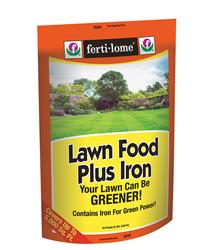- Plant pansies for spring color next year.
- Plant spring blooming bulbs such as tulips and daffodils for a welcome sight next year.
- Winterize the sprinkler system by draining the lines and blowing out the system, one station at a time.
- Work on controlling slugs and snails by cleaning up areas they are attracted to, and using bait or sprays.
- Compost leaves, dead non-diseased garden plants, and other organic matter.
- Till vacant lots and empty gardens to control over-wintering grasshopper eggs.
- Divide spring-blooming perennials three to four weeks before the ground freezes if they haven’t been divided in four or five years,.
- Wrap the trunks of young trees with white tree wrap to protect them from winter sun exposure from the south and west.
- Lower the height of the mower to cut the lawn between 1 ½ to 2 inches high to prevent winter damage.
- Apply a quick-release nitrogen fertilizer after the last mowing (October to early November) to help the lawn green up early next spring.
- Cut roses back to about four feet tall to prevent heavy snow load damage.
- Protect roses by mulching the base 4-6 inches high around the graft union.
- Plant green cover crops to boost your soil next year.
- Divide and transplant spring and summer blooming perennials.
- Harvest winter squash before it freezes.
- Plant fall bulbs and perennials for a colorful spring.
- Deep water all evergreen trees and shrubs.
- Wrap young trees for winter.
- Clean up perennial flowers.
- Add compost and till garden plot.
When you stop to think about it, your lawn plays a huge roll in your life this time of year. You sit on it to enjoy the picnics and the fireworks, you spend your Saturdays mowing and edging it. Summer is a great combination of busy and relaxing, and your lawn is a part of it all. Believe it or not, Summer is getting ready to wind down for the year. This means it’s time to give your lawn the boost it needs to make it through the last leg of the August heat and transition into the Fall.
We recommend Fertilome Lawn Food Plus Iron. A good all-around lawn food with iron for fast immediate greening on all types of lawns. The iron in the product is chelated for fast, long lasting green-up of the lawn. It contains two types of Nitrogen, which allow for quick greening and long term stable growth. All that healthy green growth up top going into Fall will set your lawn up to be able to gather all kinds of energy from the sun, sending it down to it’s roots. These healthy roots will store that energy through the Winter and use it to make a great comeback in March. (you’ll also want to apply our Winterizer in October to complete the process) Keeping up on a healthy lawn now will pay off way down the road!
Remember to leave your lawn a little longer during this hot dry time of year to help preserve water and help maintain optimum lawn health.
- « Previous Page
- 1
- 2
- 3
- 4
- 5
- …
- 8
- Next Page »



